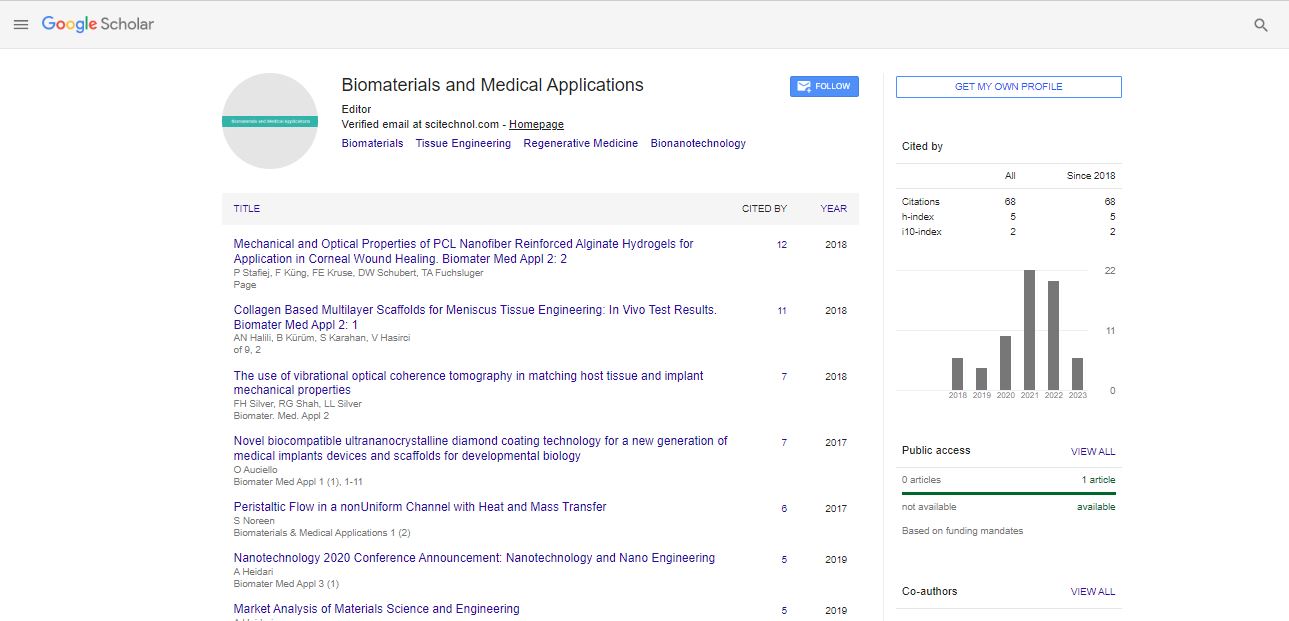Enhanced performance of 3D-printed biomaterials with composite approach
Reijo Lappalainen
University of Eastern, Finalnd
: Biomater Med Appl
Abstract
Our natural bone and tooth tissues are based on a complex hierarchical structure utilizing collagen fibers bundled together with proteins and reinforced with ceramic mineral crystals such as hydroxyapatite. Furthermore, fine-tuning of the composition and structural features allows building layered structures such as cancellous porous bone covered by a high-density hard cortical bone or an elastic dentine core of a tooth with a hard enamel surface layer. These lead to optimal performance. In modern restorative dentistry, the aim is to match properties of the restoration and the tooth to achieve good long-term performance. Multicomponent composites are developed with biomimetic scope, i.e. to mimic natural tooth structure and function. Conventionally particulate filler composites (PFC) are used but more recently such as short fiber-reinforced composites (SFRC) and nanofiller composites have been developed. Furthermore, current composites utilize light, chemicals or their combination for curing. By composite approach several advantageous properties of biomaterials have been achieved such as greater stiffness, higher elastic limits, higher fracture resistance and lower wear. Different materials and composites have emerged in 3D-printing techniques in medical industry and even clinical practice allowing producing well-controlled designs with complex structure, composition and shapes. 3D printing is currently used to fabricate, e.g. surgical tools and guides, patient-specific surgical models, removable dentures, splints, scaffolds, facial prostheses and orthodontic aligners. The use of these materials and products is slowly moving from temporary to permanent restorations.
Biography
Reijo Lappalainen works as a biomaterials technology professor and a responsible project leader at the University of Eastern Finland, Dept. of Applied physics with his biomaterials technology group of about a dozen members. Recently he has been very active in the development of ultra-short pulsed laser ablation techniques, biorefining, slow pyrolysis, biocomposites and novel nanomaterials. He has a long-term experience in cooperation with companies and is actively involved in several spin offs. He is an author in about 206 peer reviewed scientific publications and in about 310 patents and extended abstracts.
E-mail: reijo.lappalainen@uef.fi
 Spanish
Spanish  Chinese
Chinese  Russian
Russian  German
German  French
French  Japanese
Japanese  Portuguese
Portuguese  Hindi
Hindi 